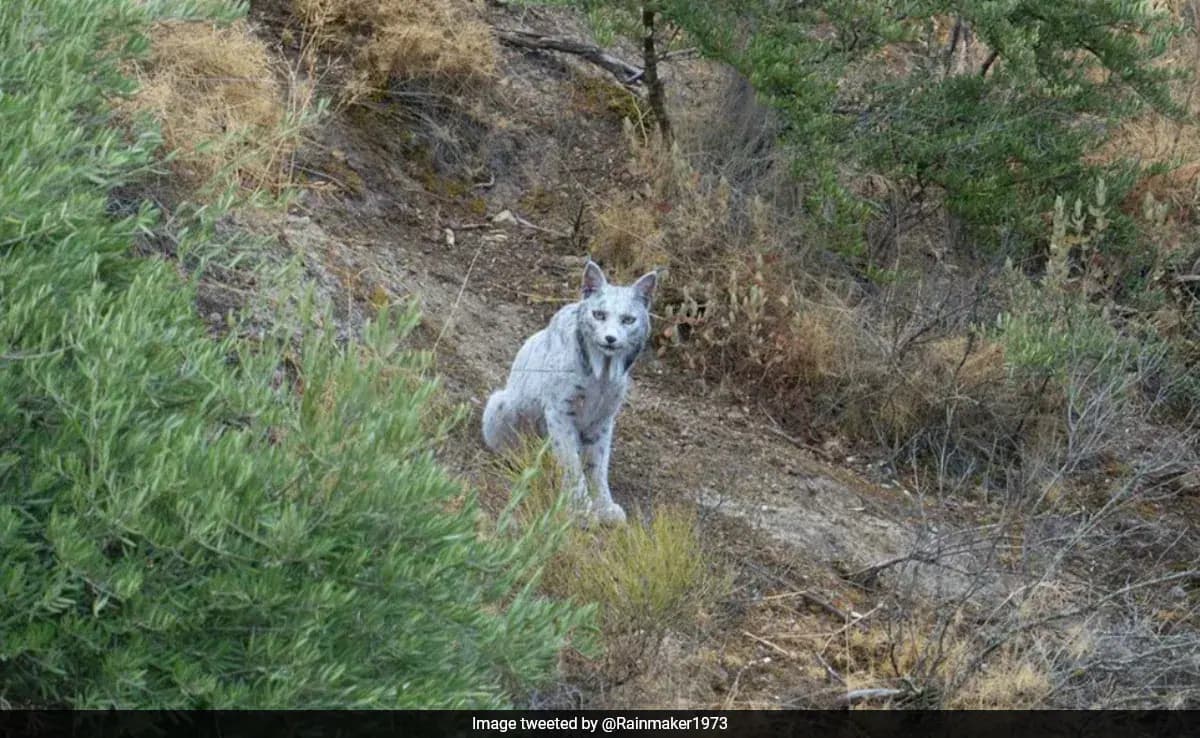We're loading the full news article for you. This includes the article content, images, author information, and related articles.
A stunning photograph of a white Iberian lynx highlights a major wildlife recovery, offering valuable lessons for global conservation efforts, including those in Kenya, as scientists debate the cause of its unique coloration.

JAÉN, SPAIN – An amateur photographer in southern Spain has captured the first widely documented images of a wild Iberian lynx with a snow-white coat, a visually stunning event that underscores one of Europe's most significant wildlife conservation successes. The sighting, which occurred in the province of Jaén, has ignited discussions among scientists and conservationists globally about the genetic health of recovering animal populations and the potential environmental triggers for such rare traits.
The images were taken by Ángel Hidalgo, a 29-year-old construction worker and passionate wildlife photographer, on Monday, October 22, 2025, EAT. After initially spotting the ghostly feline on a camera trap several months prior, Hidalgo dedicated his free time to tracking and photographing the animal, a quest that culminated in a successful dawn sighting after a night of rain. He described the animal as a “white ghost of the Mediterranean forest” with “piercing eyes.”
While initially celebrated as the first recorded case of leucism—a genetic condition causing partial loss of pigmentation—in the species, experts have since offered a more complex explanation. Javier Salcedo, regional coordinator of the Iberian Lynx Recovery Plan in Andalusia, confirmed the animal's existence but stated the white coat is likely not a permanent genetic trait. According to Salcedo, the lynx was previously observed with normal coloration before turning white, a phenomenon also seen in another related female that later reverted to her typical tawny, spotted coat. Experts now theorize that stress or other environmental factors may have temporarily altered the synthesis of melanin, the pigment responsible for fur color. Further investigation is required to confirm the exact cause.
The white lynx has become an international symbol of the Iberian lynx's incredible comeback from the brink of extinction. Once the world's most endangered feline, the species (Lynx pardinus) had dwindled to fewer than 100 individuals by 2002 due to habitat loss, poaching, and the collapse of its primary prey, the European rabbit.
Decades of intensive, collaborative conservation efforts have reversed this decline. Coordinated by Spanish and Portuguese authorities with support from the European Union's LIFE programme and various NGOs, the initiatives focused on captive breeding, habitat restoration, reintroduction programs, and securing rabbit populations. As a result, on Thursday, June 20, 2024, EAT, the International Union for Conservation of Nature (IUCN) officially upgraded the Iberian lynx's status from 'Endangered' to 'Vulnerable'. The total population, including young and mature individuals, now exceeds 2,000 across Spain and Portugal, a more than twenty-fold increase since the turn of the century.
This success story offers a powerful model for wildlife conservation worldwide, including for Kenya's own iconic big cats. The Iberian lynx recovery demonstrates the efficacy of multi-stakeholder collaboration, long-term funding, and science-based interventions. Francisco Javier Salcedo Ortiz, coordinator of the LIFE Lynx-Connect project, described it as “the greatest recovery of a cat species ever achieved through conservation.”
The principles behind this European success—habitat connectivity, community involvement, and prey population management—are directly applicable to the challenges facing lions, leopards, and cheetahs in East Africa. In Kenya, organizations like the Kenya Wildlife Service (KWS) and various conservancies work to mitigate human-wildlife conflict and secure habitats, often through partnerships. A recently renewed Memorandum of Understanding between Kenya and Spain on tourism and conservation aims to share expertise, with Kenya offering insights on community-based conservation and Spain providing knowledge on sustainable tourism. This collaboration could see lessons from the lynx's recovery directly informing strategies to protect Kenya's predators.
The debate over the white lynx's coloration also touches upon a broader scientific field: the impact of environmental change on animal physiology. Anthropogenic stressors, including habitat fragmentation and pollution, are known to affect animal pigmentation and health. While the specific cause for this lynx remains unconfirmed, the incident serves as a reminder of the complex interplay between genetics, environment, and wildlife well-being. For now, the exact location of the sighting is being kept secret to protect the unique animal from potential illegal hunting, a threat that persists despite the species' recovery.
Keep the conversation in one place—threads here stay linked to the story and in the forums.
Other hot threads
E-sports and Gaming Community in Kenya
Active 7 months ago
Popular Recreational Activities Across Counties
Active 7 months ago
The Role of Technology in Modern Agriculture (AgriTech)
Active 7 months ago
Investing in Youth Sports Development Programs
Active 7 months ago